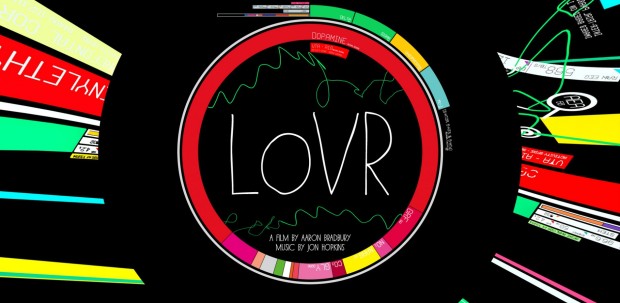I could still recall the first time when I immersed myself in a VR experience. It was last year’s FIVAR (The Festival of Virtual & Augmented Reality). I came to the festival with no knowledge about virtual reality stories. LOVR produced by Immersive Ltd. was my first experience and my perception was suddenly grasped this real time rendered visual magic.

Poster of LOVR
Although I have the visual storytelling background, I have to confess that the experience given by the VR platform was unprecedented. And as far as I began to dig into such an interdisciplinary study regarding to virtual reality storytelling, I am surprised about how sophisticated it is. Not only am I referring to the technological requirement, but also the quality with those storytellers, or I should call them, innovators.
Regardless of all these changes and challenges, one thing that can’t be doubt is, no matter what technological medium that might be seen as the future trend or the social innovation, we go back to its essence, the story. Just like the gospel around Oculus Story Studio is to “deliver a compelling, immersive, evocative VR experience by telling a great story”, we believe in a simple mantra: “Story is King!”
The process of creating a VR story still seems different than the traditional. Another mantra from Story Studio, which is also as important as the first one, that is: “Presence is magic.” I strongly agree with the ability of VR that can transform you into a different world in real time where make you feel present. In that sense, a story within this virtual space isn’t just about sitting passively in our sofas engaging with the visual language, but actually we are immersed in the world. We are part of the experience, feeling empowering and connecting, maybe we are the protagonist who can interact with stories by our conscious activities.
Therefore, rather than composing the story as a visual form, I envisioned this project as a story-orientated visual experience. In the process of script writing, I changed some of the techniques to better compile all the visual information to tell the story, also let the technical team to understand my goal and vision. While I were writing for this interactive project, I proposed some questions explaining why VR narrative is different than the traditional storytelling. For example, how does the creator/director eliminate the sense of isolation among actors and audiences (in another word, break the “forth wall”)? How do we tell a personal narrative, that will make each user feel private, intimate and resonated? According to Dan’s Solo, which is a personal narrative for VR platforms. It is also a first person, real time rendered experience. Its interactive component not only lead the audience become users to interact with certain object in the environment which could narrate different story trajectory and let users make decisions as they are the protagonist. The question for me to think about before constructing this virtual environment, is that how can I possibly lead the audience, like holding their hands, and let them experience the process of standing in someone’s shoes and experiencing his/her life?
So my answer to the first question is, yes, it is possible to tell a story in VR, and I believe the immersive space will enhance the audience’s experience when they read the story. But VR stories are driven by the content, which derives specific questions regarding to the stories, and what I call it as a 360 degree of the story scope. As we producing a VR narrative, we are not creating the mise-en-scene, we are building a virtual environment, which does not give us the power to direct the audience gaze but only guide them through strategies. For me I think this may develop a trust-worthy relationship between creators and users. We give them an experience and let them make decisions. And now, we may start to think about, how to polish or reinforce their experiences which give them an more enjoyable time.
References:
Oculus Story Studio Blog
Immersive Ltd. Virtual Reality










